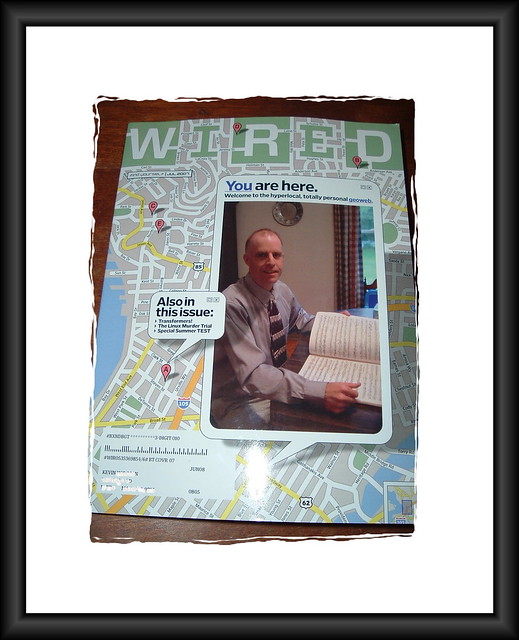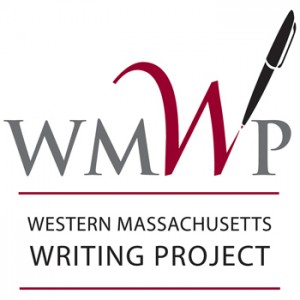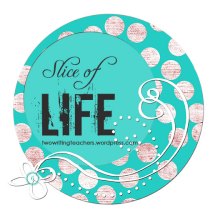
Many years ago (I realize now it is 20 years, back in 1993), I saw a brand-new, start-up magazine on a newstand one day that seemed vaguely interesting to me for reasons I did not fathom and so, I subscribed for a year. I had no idea what in the world they were talking about in the pages of this magazine, but it seemed intriguing.
So, I kept reading Wired magazine.
One article that stuck with me was a piece about how this thing called the Web was going to change people’s lives and how a tool called Mosaic — a web browser — was going to shake things up. I had only vague notions of the Internet, thanks to a friend’s Compuserve account, and no clue as to what a web browser was nor why a graphic interface was important. Again, I kept reading, even as I was pushed way, way outside my comfort level and way outside my field of knowledge. I dropped the subscription during some lean financial years, and started back up again about 10 years ago, and have kept it going ever since.
I even took part once (in 2007) when the magazine said, send us your photo and we will send you a special edition with the reader on the cover. I did. I was.

I mention all that because I still look forward to Wired dropping in my mailbox (I’m still not yet excited with magazines on my iPad, and wish Newsweek still came to my mailbox, too.) I have always enjoyed how they balance a look to what’s coming with a look at what’s in the present, and that which has gone away. I don’t always buy the preachy viewpoint of technological change that they push us towards, but that’s OK. There is always enough in there to spark my brain.
So when the 20th anniversary, celebratory edition of Wired arrived the other week (see for yourself), I was intrigued and dove in. In a traditional alphabet sequence of ideas (Wired goes Old School!), the magazine revisits some of the transformative events and flops of the last 20 years as they have covered the world becoming increasing digital. From Beta designations of just about everything to Hypertext to the vocabulary of “snarky” tones of online writers to virtual communities to xkcd comic, the magazine’s coverage of the last 20 years is a great read.
Here are some snippets from the 20th Anniversary edition that jumped out at me:
“Now we experience culture through our apps.” (26)
“… the Arab Spring has shown the world what is possible when you combine social unrest with brave citizenry and powerful digital tools.” (28)
“The beta designation used to mean that a product wasn’t finished. Now we know it never will be.” (30)
“Really good coders build entire universes out of ideas.” (36)
“Crowdsourcing is the first industrial operating system native to the information age.” (42)
“We’re also in the midst of another major development: Design has become accessible to anyone with a laptop.” (44)
“Geekiness has become a synonym for counterculture braininess. And the rest is history.” (80)
“We now speak of hacking as a way of life, a gleeful corrective to any mired process … Whether or not we code, we all have a bit of the hacker in us now.” (86)
“In its wonderful vagueness, HTTP encoded a profoundly upbeat idea about our ability to come together, to fill in the blanks. And that crazy optimism has proven correct.” (90)
“New possibilities come to mind when intelligent worlds collide, and in the long run the web needed the poets and philosophers almost as much as it needed the coders.” (92)
“As with any technology, the long-term survival of language depends on utility. A word must fit its task, and sometimes — thankfully — that calls for a little wit.” (98)
“Put it all together and you have a bottom-up transformation of manufacturing that is following the similar democratized trajectories of computing and communications.” (108)
“Digital tools complement our effort to obtain meaningful face-to-face interactions.” (120)
“Reading code is like reading all things: you have to scribble, make a mess, remind yourself that the work comes to you through trial and error, and revision.” (122)
“The most accomplished trolls force online communities to ponder the limits of free speech in a medium that was supposed to obviate censorship.” (160)
“In the moment when some meme or viral video is taking off, it really does feel like a sort of epidemic.” (166)
“But never gone is the miraculous feeling of connecting with people far from our houses but close to our hearts.” (168)
Peace (in the words of the Wired world),
Kevin







